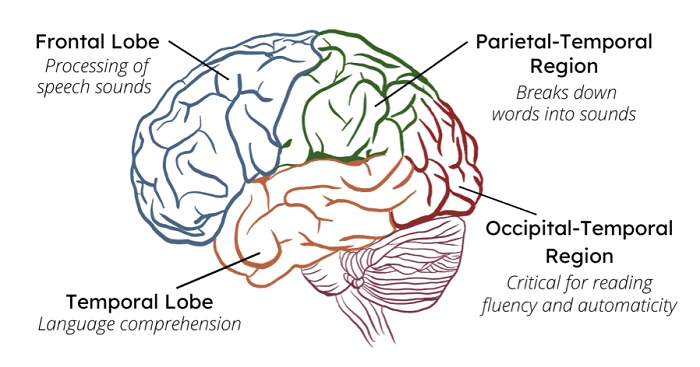Let me start with a weird question—have you ever drawn the sun as a kid? I bet it was yellow. Maybe even orange with some red squiggles if you were feelin’ fancy. Right?
Well, here’s the twist: the sun isn’t really yellow. Or orange. Not even red (unless you’re watching it at sunset through a lot of atmosphere and pollution, in which case—sure, it’s basically a flaming tomato).
So… what is the real color of the sun? I mean, if we could just float up into space, strip away the atmosphere, and look at the sun with our own eyes—what would we actually see?
Grab a cup of chai or coffee or whatever keeps your brain cells buzzing, because we’re diving deep into this cosmic color mystery.
🌀 Chapter 1: Why Does the Sun Look Yellow From Earth?
Let’s start with the obvious. When you glance at the sun from Earth (and please, don’t actually do that unless you’re cool with frying your retinas), it looks yellow. Why?
🌍 The Blame Game: Earth’s Atmosphere

Okay, here’s the thing. Earth’s atmosphere is like one giant Instagram filter—except instead of Valencia or Clarendon, it’s using “Scatters-the-blue-light” mode. (Totally not trending, but effective.)
The sun emits all kinds of visible light—red, orange, yellow, green, blue, indigo, and violet. All those colors together? They form white light. Yes, WHITE. Like those intense LED bulbs that make you question your life choices at 3 AM.
But as this white sunlight passes through the Earth’s atmosphere, the shorter wavelengths (like blue and violet) scatter in all directions. This is called Rayleigh scattering, and it’s the same reason the sky looks blue.
That leaves behind the longer wavelengths—like red, orange, and yellow—which reach our eyes more directly. And that’s why we see the sun as yellow.
💡Quick analogy? Imagine you’re at a concert and everyone shorter than you gets pulled away to a VIP lounge. You only see tall people left in the crowd. That’s kind of what happens with sunlight and the atmosphere. 😄
🧪 Chapter 2: The Real Deal – What Color Is the Sun in Space?
Now, here’s where things get juicy.
Astronauts who’ve been to space (and no, I haven’t interviewed one personally, but I’ve read a few memoirs!) say the sun looks… wait for it…
❗BRIGHT WHITE.
Yup. Not gold. Not orange. Just pure, blazing white light. Like the high beams of a semi-truck coming straight at you at midnight. You know the look.
The absence of Earth’s atmosphere means no more scattering shenanigans. The sun reveals its true face—a fierce, neutral white that includes all visible wavelengths in balanced proportions.
👓 Fun fact: If you were to pass sunlight through a prism in space (like ol’ Newton did here on Earth), you’d see the full spectrum—ROYGBIV, baby! Just like the rainbow.
📸 Space Photography Confusion: Why NASA Shows a Yellow or Orange Sun
Now, if you’ve ever seen those high-res images from NASA, you might be like, “Dude, that’s clearly orange.”
Yeah, about that…
Many of the sun pics you see are color-enhanced or taken in specific wavelengths (like ultraviolet or X-ray) that human eyes can’t see. The colors are added to represent different solar activities—like flares or sunspots.
So basically, it’s like an x-ray with a splash of artistic license.
🧠 Chapter 3: How Our Brains Influence What We See
Here’s a slightly philosophical detour (bear with me).
Color, as we perceive it, is not just about light—it’s about how our brains process that light. Our eyes have these things called cones (no, not the ice cream kind), and they’re tuned to detect different wavelengths.
But here’s the kicker—our brains also do a ton of behind-the-scenes editing. It adjusts for lighting, surroundings, and contrast. That’s why a white shirt under golden sunset looks warm-toned, even though the shirt hasn’t changed color.
So the yellowish sun we see from the ground? It’s part physics, part brain magic. Kinda like an illusion we’ve all agreed is real.
🌈 Chapter 4: The Sun Through Different Filters – A Color Spectrum Show
Let’s nerd out for a second and talk about wavelengths. Different parts of the sun emit different wavelengths, right?
Each element on the sun’s surface gives off light at specific frequencies. Hydrogen emits in one part of the spectrum, helium in another. It’s like a cosmic karaoke night, where every atom gets to sing its own tune.
Spectrometers (science-y instruments that split light into its components) reveal that sunlight covers the entire visible spectrum pretty evenly. So again, that means white.
Here’s a quick breakdown:
- Red = longer wavelength (~700 nm)
- Violet = shorter wavelength (~400 nm)
- White = all wavelengths blended
So when you combine all of those light frequencies coming from the sun? Voilà—white light.
🎨 Metaphor time: It’s like mixing all paint colors. But instead of a murky brown mess, in light, you get white. Go figure.
🌇 Chapter 5: Why the Sun Looks Red or Orange During Sunset
Okay, let’s address the ultimate color-shifting moment: sunset (or sunrise, if you’re one of those magical people who function before 8 AM).
When the sun is low on the horizon, its light has to pass through a thicker slice of the atmosphere. That means more scattering of blue and green light, and even some yellow. What’s left? The reds and oranges.
That’s why sunsets are so dramatic and warm-hued. And honestly, who doesn’t love a good sunset selfie? #NoFilter needed (unless you’re going for that extra glow).
🔥 Quick Anecdote:
I remember sitting on a beach in Goa, sipping coconut water, watching the sun dip into the sea like it was melting. My friend goes, “Wow, the sun looks so orange today.”
And I said, “Technically, it’s still white. Our planet is just showing off.”
He rolled his eyes. Fair.
🔭 Chapter 6: What Scientists Say – Blackbody Radiation
Okay, stay with me here—we’re gonna get a bit geeky.
The sun, like many hot objects, is considered a “blackbody” radiator. Not because it’s black (clearly not), but because it absorbs and emits all types of electromagnetic radiation.
Based on its surface temperature (about 5,778 Kelvin—so yeah, HOT), the sun emits the most radiation in the visible spectrum, peaking around green. But our brains don’t see just green—we see the full mix, which is perceived as white.
This blackbody curve explains why stars of different temperatures appear different colors. Red stars are cooler, blue stars are hotter, and yellow stars… well, that’s just a trick of the atmosphere again.
🌟 Sidebar: Fun Color Star Comparisons
- Betelgeuse? Red (and not just because it has a scary-sounding name).
- Rigel? Blue-white and scorching.
- Our sun? White, baby.
💬 Chapter 7: So Why Do We Keep Calling It a Yellow Dwarf?
You’ve probably heard that the sun is a “Yellow Dwarf” star. Astronomers love that label. But it’s kind of outdated, like calling Pluto a planet (oof, sorry Pluto lovers).
In truth, the term “Yellow Dwarf” is a classification based on the sun’s size and temperature compared to other stars—not an accurate description of its color. If we were being literal, “White Medium Star” might be more on point, though it’s way less catchy.
📚 Chapter 8: Cultural and Mythological Perspectives on Sun’s Color
Before science got its hands on the sun, humans imagined it in all sorts of ways.
- In Hindu mythology, Surya is often depicted as a radiant golden figure, riding a chariot pulled by seven horses (which, fun fact, are sometimes interpreted as the seven colors of light).
- The ancient Egyptians saw the sun god Ra as a blazing disc in the sky.
- Even Native American cultures often linked the sun to warmth, life, and golden energy.
And honestly? It makes sense. The sun feels golden. It feels warm. White just doesn’t capture the poetic glow we experience down here on Earth.
🥁 Final Thoughts: The Sun’s “Real” Color? It Depends…
So what’s the final answer? What is the true color of the sun?
Scientifically speaking—white.
But from our human perspective, filtered through atmosphere, culture, and storytelling? The sun has worn many colors: golden, orange, crimson, even pink on those Instagrammable evenings.
And maybe that’s what makes it magical. The sun isn’t just a ball of burning hydrogen—it’s a mirror for how we see the world.



